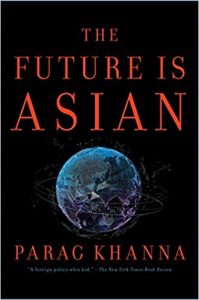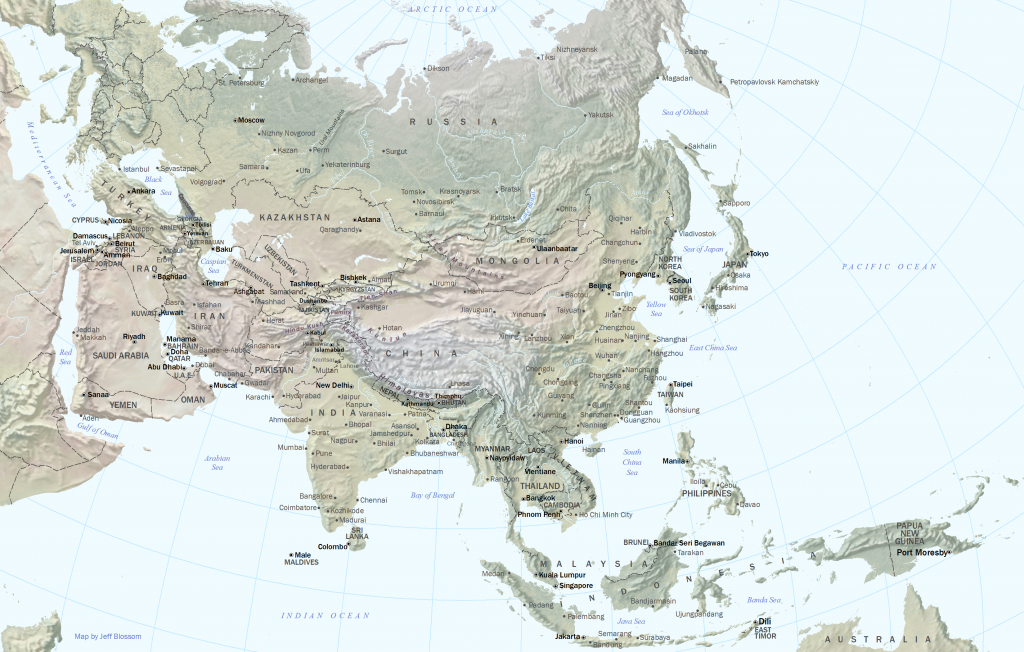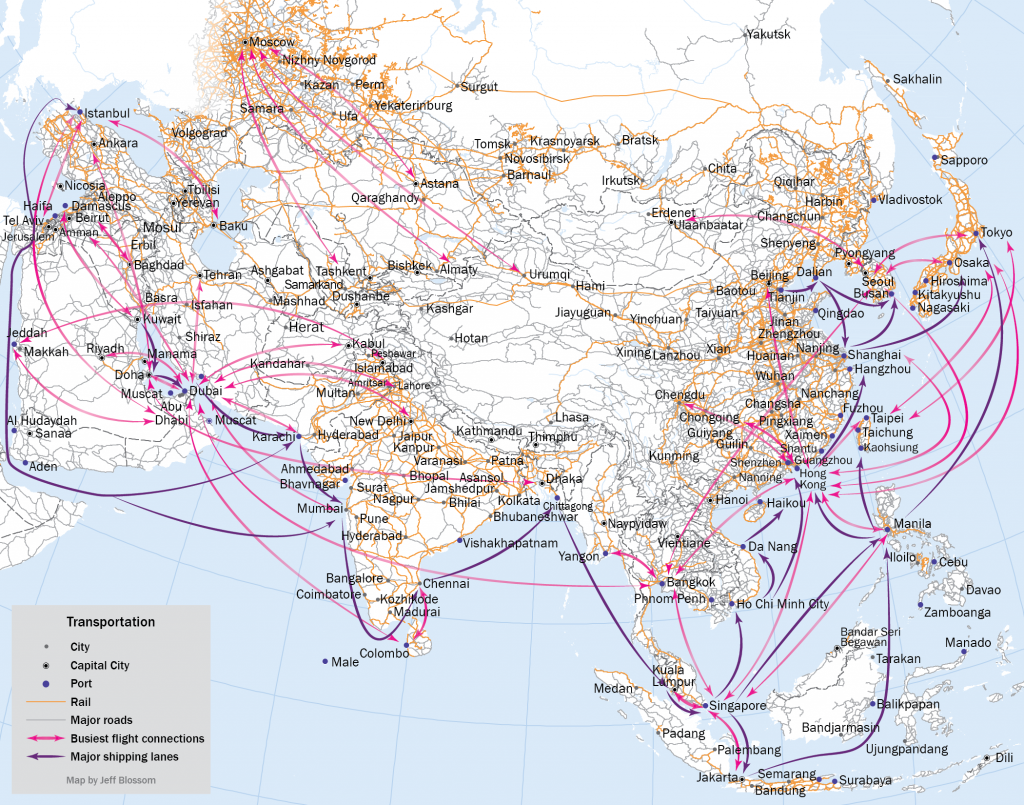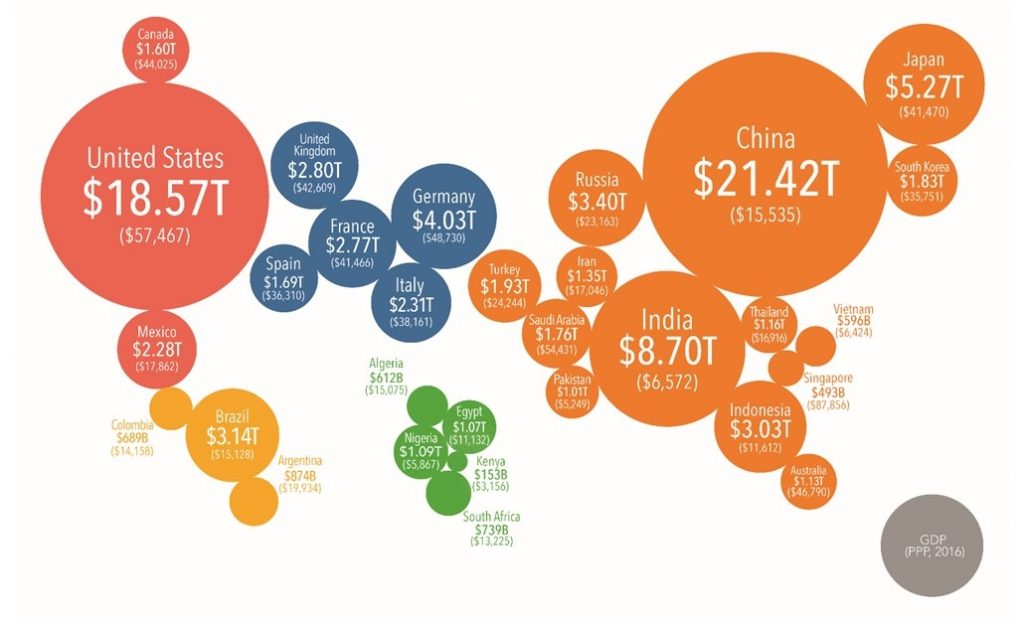
SHORT URL (tell others, please):
http://tinyurl.com/review-asian
Parag Khanna
5 Stars – Utterly brilliant insights and data, but publisher should have invested in graphics to match
Parag Khanna is for me the single best observer and reporter on the substance of Asia which he takes great pains to point out is not just China (a third of Asia’s population) but includes particularly vast swaths of Russia, India, Central Asia, Southeast Asia including Indonesia and Australia, and Turkey.
My review of his earlier book CONNECTOGRAPHY: Mapping the Future of Global Civilization is the other half of this story, and makes the point that China has already defeated the United States in geostrategic terms because China focused on what Ron Paul calls a foreign policy of peace, commerce, and friendship while the USA poured ten trillion dollars into endless wars and a military-industrial complex that is a total lootfest.
Those that prefer the video format might consider Sarah Westall’s video interview (YouTube, 37:50) with the author, The Future is Asian – Commerce, Conflict, and Culture w/ Parag Khanna. I include the points he makes there in this text review. There is also a longer video, from the Carnegie Council for Ethics (YouTube, 1:03:29), Parag Khanna: The Future is Asian.
This is the most data rich book I have read recently. Behind the author is an extraordinary research team that did an utterly superb job of getting to serious data that the author has then blended in a gifted delivery with many brilliant turns of phrase.
The book loses one star (from 6) because the graphics are worthless – the publisher compromised for cost-saving resulting in illegible graphics. Someone should be fired for letting this book get out the door with such mediocrity undermining the otherwise stellar nature of the book. Both the author and the readers merit a greater standard of care in publishing.
This book is priceless at multiple levels. For just about everyone in the West that knows nothing about Asian history, it provides an executive primer to include the point that 80% of Russia is Asian and Russia’s Asian history is even less understood than Chinese and Southeast and Southwest Asian history.
For me what stood out across the book was the author’s able explanation, backed by well-documented sources, on what I think of as the Asian tri-fecta: technocratic leadership devoted to the public interest (as opposed to the corrupt politicians lacking practical public administrative experience in the West); the ability to achieve a “Western” quality of life at a fraction of the cost because banks and corporations are not allowed to inflate prices; and the inevitability of the world becoming somewhat Asian through the combination of rising Asian youth; exported Asian males; and the influence of Asian money and Asian business practices world-wide.
Warning notice to the USA: you have lost both Canada and South America to China specifically and Asia generally, for lack of intelligence, integrity, and imagination – the author makes it clear that Asia’s rise in South America (and Africa) is based on offering a better deal, not the election rigging, regime change, and other “dirty tricks” that characterize the US approach to Third World countries. A similar warning notice to Europe in relation to Africa, France in particular (I anticipate the expulsion of all European military bases from Africa in the next ten years).
The author compares the Belt and Road Initiative to the US Marshall Plan, and makes the point that this is the most significant diplomatic and economic project in the 21st Century – it is connecting everyone in a non-violent generally profitable manner (China is cutting its losses when local corruption destroys its investments). He observes that China is an authoritarian technocratic state, not a communist state. China is vastly more entrepreneurial than the West and Western academics and media appear to understand. Asian youth are growing up excited about the future – Americans and Europeans have experienced 9/11, Brexit, wars, other negatives. The social credit thing is an experiment and applies as much to companies (e.g. poisoned baby formula) as it does to individuals.
The world is multi-polar within multi-polar – three large regional systems – US, Europe, and Asia – and within them fluctuating alignments such that no one power – including China – always gets what it wants. He makes the point that global finance is not one big pool of money – it’s actually distributed. About 700+ billionaires in each of three areas: US, Europe, and Asia. They all invest across borders. [I would add my separately formed impression that Asian and Russian families of wealth going back centuries (as well as Asian, African, and American indigenous leaders) have had it with the Deep State and the City of London – Wall Street Axis of Evil, I believe central banks will be nationalized around the world and there will be a restored connection between people on the land working the land, and wealth.]
QUOTE (17): The United States is more dispensable than it thinks.
The author hits the USA hard (and justly so in my view) for not having a serious strategy for Asia (or the rest of the world I would add), for being overly China-centric and not understanding that China has never been a colonial or expansionist power, and for not getting that US “consumerism” in its present form will simply not transfer to Asia – if anything the transfer of Asian capitalism to the West is more likely. India, Turkey, Iran, and the 80% of Russia that is Asian are given proper emphasis in this book.
The author asserts that Asia has has been particular successful at subordinating Islam to pragmatic governance.
QUOTE (84): Russia and China are today strategically closer than at any point since the heyday of their 1950s Communist alliance.
To which I would add, the continued demonization of Russia by the US-UK Deep State is not only contrived but most harmful to US and UK national security and prosperity.
I learn that China has major investments in the Ukraine – which has declared 2019 the “Year of China” and that Russia and China are collaborating – and former Russian satellite states are collaborating – in driving an economic spear straight into the heart of Europe via Kazakhstan – a spear comprised of high speed rail balanced with ports and roads, all of which produce transit taxes.
I learn that Chinese computers are replacing Western computers in Russia. Separately I and others have written about the plans for a post-Western Internet as well as a post-Western economy. Corruption and greed and slovenly engineering (government specification cost plus as Chuck Spinney would call it) have sharply reduced the attractiveness of Western information technology, completely apart from the Zionists and the National Security Agency having back doors into every piece of Western hardware and software sold anywhere.
QUOTE (90): Climate change will further accelerate Russia’s Asianization (and I would add Arcticization)….Canada and Russia could have climates resembling that of the United States by 2040.
Israel appears throughout this book, I can only hope that Asia realizes that Israel in its present form is a parasite that will incite Muslim radicalism as part of its sales strategy for espionage, police training, and military arms.
QUOTE (108): China is the biggest investor in Kazakhstan’s railways and pipelines, Uzbekistan’s energy and transport infrastructure, Turkmenistan’s gas fields, Kyrgyzstan’s mineral sector, and Tajikistan’s hydropower plants.
Pakistan has found a new strategic purpose: to be the reliable conduit for Central Asian goods to the Arabian Sea.
The Association of Southeast Asian Nations (near to my heart – I lived in Viet-Nam, the Philippines, Thailand, and Singapore in the 1960’s) has a 2025 master plan that will harmonize standards for banking, telecommunications, and e-commerce. I expect them to centralize all national banks by then.
Australia is clearly described as “white Asian” (as is Russia despite the precipitous decline of white births there), and comes across as conflicted about joining ASEAN and accepting its “Asianness.” I predict that Australia will leave the Commonwealth and a joint project with China and Indonesia will turn Australia into an oasis with unlimited free energy and unlimited desalinated water pouring across the interior.
In passing the author points out the total disconnect between how the US organizes its theater commands and how Asia should be approached. [Personally I do not think we should have regional commands but rather inter-agency regional headquarters, with the military reverting to four commands for big war, small war, peace, and homeland.]
QUOTE (158): Asians see the market as a partner, not a master.
The chapter on Asia-nomics may be the most important chapter in the book as we all await the Global Currency Reset and the nationalization of the US Federal Reserve that has contrived to cause every Depression and recession in America going back to the Great Depression (see my review of Wayne Jett, The Fruits of Graft). In a nutshell, the Asians are striking a balance between social (but not yet ecological) health and economic growth, while the West simply allowed the 1% to eat its seed corn (see my reviews of William Greider, The Soul of Capitalism: Opening Paths to a Moral Economy; and of John Bogle (RIP), The Battle for the Soul of Capitalism).
QUOTE (174): Asia no longer faces deficiencies in the money, technology, or talent needed to fund and scale companies in any industry.
Japan and Korea get their due here and I would highlight two points: first, the author discusses Japan’s recent discovery of massive undersea rare earth mineral deposits; and second – not discussed in the book – the certain unification, denuclearization and demilitarization of the Koreas, which will create a combination of low cost labor and high tech that will challenge China in interesting ways.
On my own mind is the possibility that the Asians, not the West, will be the first to actually harvest all that can be gotten from the sea, which is 70% or so of the earth surface and wealth. I am troubled by Asia’s slowness to recognize that solar energy and desalinated water as well as decontaminated water are the Holy Grail for the future – the water shortages are not receiving adequate attention.
As I am not a fan of Amazon, which is banning books and censoring reviews and reviewers that its Zionist “flaggers” consider politically incorrect, I am much taken with the discussion of Alibaba Cloud as a challenger to Amazon Web Service, particularly now that it is known that Larry Ellison’s cloud has collapsed and he has no serious strategic plan comparable to Amazon’s or Alibaba’s. I realize the Chinese will censor also, but I see a new cloud emergent that will include virtual tunnels of freedom.
India is re-inventing education, with new hybrid technical-professional academies that meet the needs of each industrial and technology sector in turn – far more sensible than continuing with the rote learning of often wrong history, science, and medicine as now “sold” at inflated prices by Western colleges.
I learn in passing that Tulsi Gabbard is the first practicing Hindu congresswoman and was sworn into the House using a Bhagavad Gita instead of a Bible.
The short chapter on Afroeurasia is noteworthy. Dubai is the hub. Asian infrastructure has opened Africa up.
QUOTE (268): Rwanda today ranks alongside Mauritius as Africa’s leader in competiveness, government efficiency, and access to credit and leads the world in the percentage of parliamentarians (64 percent) who are women.
The heart of the book, the chapter on Asia’s Technocratic Future, integrates all that is good about Asia and why this is going to create the Asian century.
QUOTE (289): The technocratic mind-set is that delay in getting these things done is itself a form of corruption.
The author excels at contrasting the mediocre US civil service burdened with archaic software and little institutional memory as well as political appointees that are generally incompetent on the substance, with the Asian approach to blended civil service and political leadership where the latter tends to have advanced business degrees and forty years’ experience at all levels of governance before they get to the very top.
QUOTE (325): The only new global rules that will be accepted will be those that the Asians agree to.
There is a very useful commentary by the author on the manner in which India is using Bollywood to educate and integrate its very diverse population, in sharp contrast to the manner in which Hollywood has been used to dumb down, fragment, and pervert the USA with its “anything goes” (including pedophilia) approach to culture.
I disagree with the author’s view that Western democracy has been “hijacked” by “populists,” in fact populists are nationalists and this is a war between Main Street/#UNRIG/Yellow Vests and the bankers that have owned and sabotaged democracy going back to the 1920’s.
I like the author’s final word: the Western (elite) attempt to impose a “global rules-based order” has failed, the Chinese phrase, “community of common destiny,” is ascendant.
There are 65 pages of notes and an index. While I consider Connectography the more revolutionary book by this author, he has in this volume assured his place as one of the foremost observers of Asian reality and the prospects for an Asian future. To paraphrase Trotsky speaking of war, “You may not be interested in Asia, but Asia is interested in you.
– – – –
Here courtesy of the author are three of the graphics in readable form.






